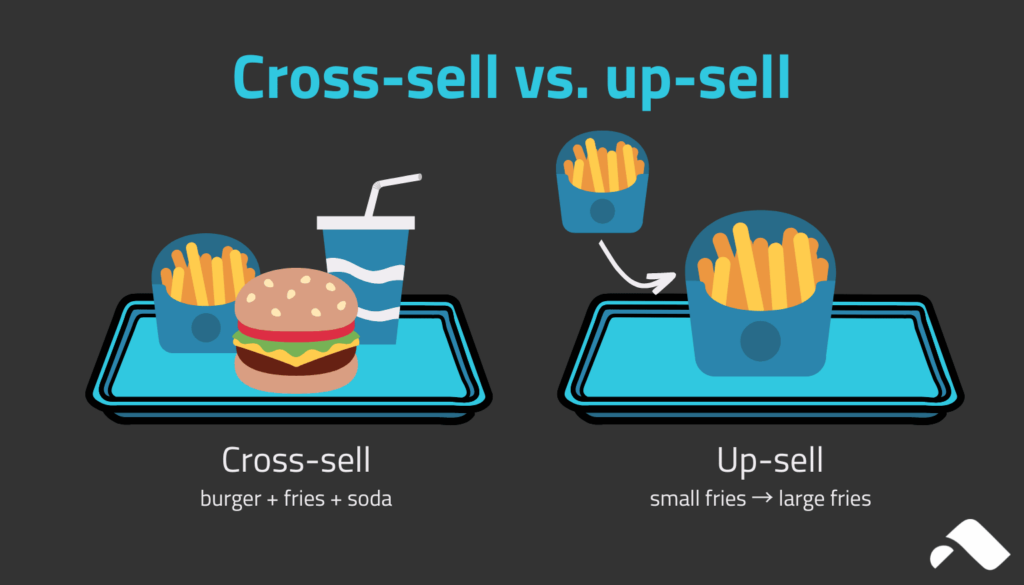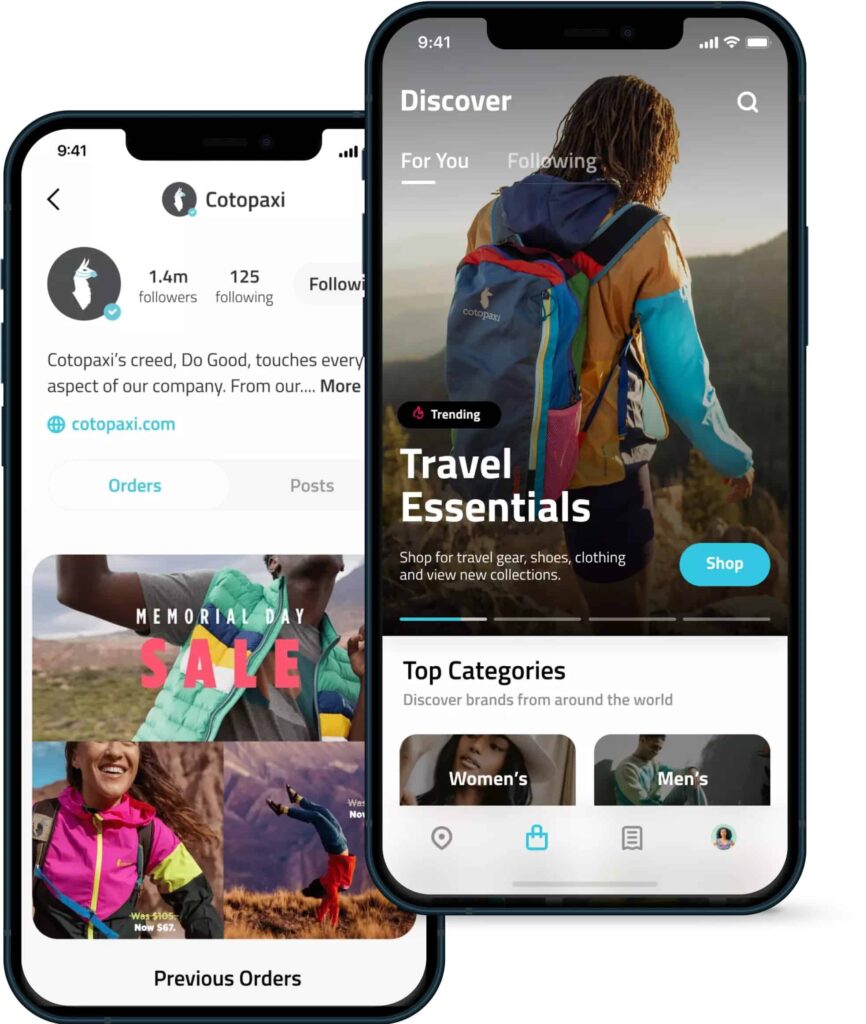When a new lead enters your sales funnel, it takes time and money to get them to convert. You shouldn’t go to all that effort just to see customers purchase one item and never look back.
You need to ensure new customers get the most value from your business. That way, it’ll be easier to grow brand loyalty and generate additional revenue from the same customers again and again.
Cross-selling is a useful strategy to retain customers and increase their lifetime value. This 101-guide will explain how cross-selling works, how it benefits your business, and why it’s a great strategy.
Retain your customers, improve their experience, and help them discover new products using Route.
What is cross-selling in ecommerce?
Cross-selling means selling additional items or services to an existing customer. The goal of cross-selling is to get your customers to buy complementary products from you instead of your competitors.
If you do it right, cross-selling helps customers gain more value from the product or service they’re purchasing since you’ve already anticipated their future needs. It can also help your business increase revenue by 20% and profits by 30%, according to McKinsey.
Examples of cross-selling
Capitalizing on cross-selling opportunities can increase your average revenue per customer (ARPC). Here are some examples of when cross-selling improves the checkout experience.
When ordering food
If you’ve ever ordered fast food online from a delivery app, you’ve probably experienced cross-selling. When you select your hamburger, you often get asked if you want to add fries and a soda. McDonald’s makes 15-40% extra annual revenue from cross-selling alone.
When purchasing electronics
When you buy a TV from an online electronics retailer, it’s likely you’ll be invited to purchase a TV wall mount. Check out this example from Amazon, and use it to think of product combinations you can offer on your site.

When buying toys with batteries
By including a one-click option to add the right batteries at the checkout, the retailer makes your experience of buying a battery-operated toy way more convenient—while convincing you to make an additional purchase with them instead of a third-party. You can do the same if you sell any products that require additional tools or equipment to use.
Cross-selling vs upselling: What’s the difference?

It’s common to confuse cross-selling with upselling. They’re both parts of the purchasing experience that help increase the average order value (AOV).
Cross-selling means selling a different but complementary product, e.g. batteries for toys. Upselling, on the other hand, means increasing the price of a product by offering higher value, e.g. changing from a personal to a Spotify family subscription.
Here’s an example that uses both cross-selling and upselling strategies. Imagine you visit the Ikea online store to buy a desk for your office. You’re planning to get a simple desk, with no bells and whistles. But as soon as you add it to your cart, you get a pop-up showing a standing desk for an extra 10%. When you open your cart, you see a “frequently bought together” sidebar offering an office chair. If you change the regular desk for the standing one, it was an upsell; if you also buy the chair; a cross-sell.
The importance of ecommerce cross-selling for your business
Cross-selling can help you improve retention but it can also attract the wrong type of customer. Here are some of the advantages and disadvantages of cross-selling.
Advantages of cross-selling
- Improves customer retention. When you incorporate cross-selling in your ecommerce website at the right times, your customers get the feeling that you truly understand their needs. They’ll likely spend more money on your brand and you’ll increase ecommerce customer retention.
- Builds customer loyalty. If you offer a good customer experience at checkout, and recommend products they love, their post-purchase evaluation is more likely to be positive. In turn, they’re more likely to recommend you to other potential customers.
- Increases profit. Getting the same customer to spend more on your products not only helps you increase your sales but also improves your customer acquisition costs (CAC) to customer lifetime value (CLV) ratio.
- Improves convenience. Your customers want you to make it easy for them to buy from your website. Many expect you to have everything they need to use your product. You can make your buyer journey more convenient through cross-selling, which will also improve customer retention.
- They’ll love you. If you offer a cross-sell that’s relevant to your target persona, you’ll gain their affection. For example, if your typical customer is committed to taking care of the environment, you could offer an add-on like carbon-neutral shipping with Route.
Disadvantages of cross-selling
- Being too invasive. It’s harder to personalize offers if you have backend and data-tracking limitations, and don’t get access to extensive data. If you make poor product suggestions, cross-selling becomes annoying, useless, and invasive to the customer. That’s a fast way to lose the sale.
- Having technical issues. If your website is buggy and your cross-selling pop-ups or links take too long to load or make the site slow, you might even end up losing that customer for good.
- Increasing workload. Cross-selling can boost your sales. That translates into an increased workload of managing support tickets, packaging, and order processing. If your staff doesn’t have the capacity to handle this, you might end up causing shipping delays and overall customer dissatisfaction. Route can help you improve your post-purchase experience by taking package tracking and protection off your plate.
- Attracting the wrong customers. You want to attract new customers—but you also want to retain existing ones. With cross-selling, you can risk attracting customers that are impulsive and motivated by discounts and promotions, rather than having an interest in your products and becoming loyal to your brand. These customers are harder to retain in the long run.
How to implement an effective cross-selling strategy for ecommerce businesses
Every ecommerce business should have a personalized cross-selling strategy based on what sells and how the customers behave. To get you started, here’s a high-level guide:
When should you cross-sell?
Cross-selling works really well when your customer is already browsing your products or adding items to their cart. Here are the best times to cross-sell:
At checkout
When the customer is about to pay for their order you can:
- Use a threshold to incentivize cross-selling. Invite your customers to spend X amount of money to access a benefit. For example, “free shipping after $50” or “get a 10% discount on orders over $100.”
- Bundle products. Make your customer’s life easier by offering them everything they’ll need to use their initial purchase. For example, the electric toy plus batteries, or an instant camera with film paper.
When they’re browsing products and adding to their cart
As soon as the customer adds something to the cart, offer them the option to buy a different product.
- Offer your shopper similar products. Do this right before they make the purchase. When the customer adds an item to the cart, make a drop-down appear with the cart information and a cross-sell. You can also do this when they check out as part of the payment process.
- Offer recommendations. Add a “frequently bought together” or “shop the look” widget to your page to show related products. For example, if someone is looking for a “golden necklace”, you could show them the matching earrings.
Checking their email
Use emails as a touchpoint to offer complementary products to your customers. You can:
- Cross-sell in order confirmation emails. Use this to sell complementary items after the initial purchase. You can add a “similar products” section below the order confirmation.
- Email follow-up cross-sells. Email your customers after purchase to introduce them to products they might enjoy.
- Use Route product recommendations. If you’re using Route to improve your post-purchase experience, you can automatically add product recommendations to your website, tracking app, and shipping notification emails.
Through on- and off-site retargeting
Use your customers’ purchasing data to retarget ads to them on- and off-site. That means creating personalized ads that invite them to buy similar or complementary products to what they previously purchased—on your website or social media.
Cross-selling dos
- Use customer data to personalize cross-selling recommendations.
- Have a thorough understanding of your products, what they’re for, and how they’re similar to others.
- Map out your customer journey and define the ideal cross-selling touchpoints (the best time to do it isn’t always at checkout).
- Understand your customers’ pain points and problems they’re looking to solve with your products. This helps you make better complementary offers.
- Add user-generated content as social proof and to generate FOMO, e.g. advertising how many people have already bought a limited edition product or adding a “low stock” stamp to the listing.
- Analyze the customer behavior on your website, spot similar searches that lead them to certain products, and offer relevant bundles.
- Add links to promotions, bundles, and related items through email either after they’ve purchased or if they filled up the cart but didn’t make the payment.
Cross-selling don’ts
- Offer products that aren’t related to their main search.
- Be invasive and offer the same deal in different tabs and pages.
- Cross-sell at the first screen. Wait until the customer has at least clicked on a product.
- Cross-sell discontinued or poorly rated products.
- Offer a product that’s significantly more expensive than their original purchase. Try to keep cross-selling items between 10-25% more expensive.
Route offers ecommerce cross-selling options for merchants

Cross-selling is one of the key players of the ecommerce post-purchase experience. But it does also risk generating more admin and support work.
Choosing Route as your post-purchase provider to handle package protection and tracking means you won’t need to answer customers’ “where’s my order?’ (WISMO) questions—we’ll solve them for you.
Also, if you have a Shopify ecommerce website, you can use the Route Grow plan to cross-sell. Use this plan to provide your shoppers with personalized product recommendations and improve the CLV.
Is cross-selling worth it?
Cross-selling is a highly effective sales technique that allows you to increase the average revenue per user and reduce the CAC:CLV ratio. This technique can increase customer loyalty since they have double the chances to try and fall in love with your products.
To cross-sell properly, you need to:
- Get to really know your buyer journey
- Collect data from your website to personalize recommendations
- Have a profound understanding of the products that you sell and how they’re similar to others
- Identify touchpoints to cross-sell
- Use on- and off-site promotion, including retargeting ads on social media and email marketing
With Route, carbon-neutral shipping and package protection is available as a cross-sell for every merchant that uses our services. This invites your customers to build an affectionate bond with your brand as we’ll protect and replace their package in case of theft, loss, or damage—while also protecting the planet.